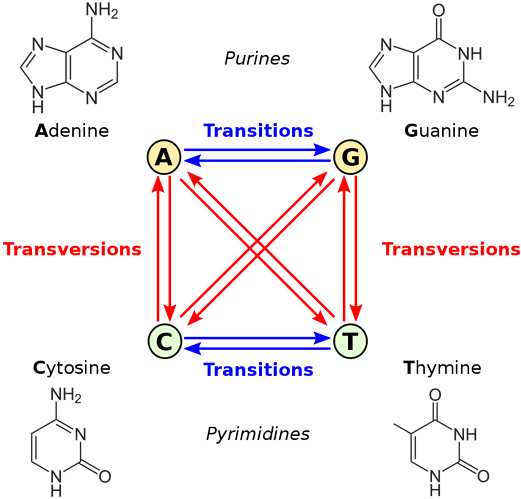What doubt? Why is it unprovable?
Let’s take this step by step.
Do you agree that there is an observed bias in the substitution mutations we see occurring in living populations? The evidence I am looking at shows that there is a bias towards transitions over transversions.
This bias is due to the chemical similarity between bases. The purines (A and G) have two ring structures while the pyrimidines (C and T) have one ring structures. Therefore, the proteins responsible for copying DNA are more likely to mistake similar bases for each other which biases the types of mutations that occur.
We also have CpG mutations which is due to the C of a two base sequence CG being methylated. When a C is methylated it can go through a chemical change that turns it into T. When copied, this T is copied as an A on the opposite strand. This produces a bias towards CpG mutations.

When we observe mutations in humans we see this bias. Do you agree so far?
That’s not how a hypothesis is used in science. In science, the hypothesis is what we test. When the hypothesis is supported we tentatively accept the hypothesis as correct. When thousands of related hypotheses are supported, we conclude that we have a very well supported theory that encompasses those supported hypotheses. This is how science works.
From what I can see, you reject how science is done. Instead of acknowledging the process of hypothesis testing, you instead call them assumptions, assertions, or just seeing what we want to see. You never seem to understand that they are hypotheses that have been tested and supported over and over and over.
Why would commonality be beyond measurement?
Also, you are forgetting speciation. This is where a population is split into two or more groups. Different mutations will accumulate in each different population which causes them to diverge over time. Again, evolution is a tree, not a ladder. You might as well ask why trees don’t look like telephone poles.
With DNA, we can determine if two species share a common donor. DNA is a direct record of inheritance.
